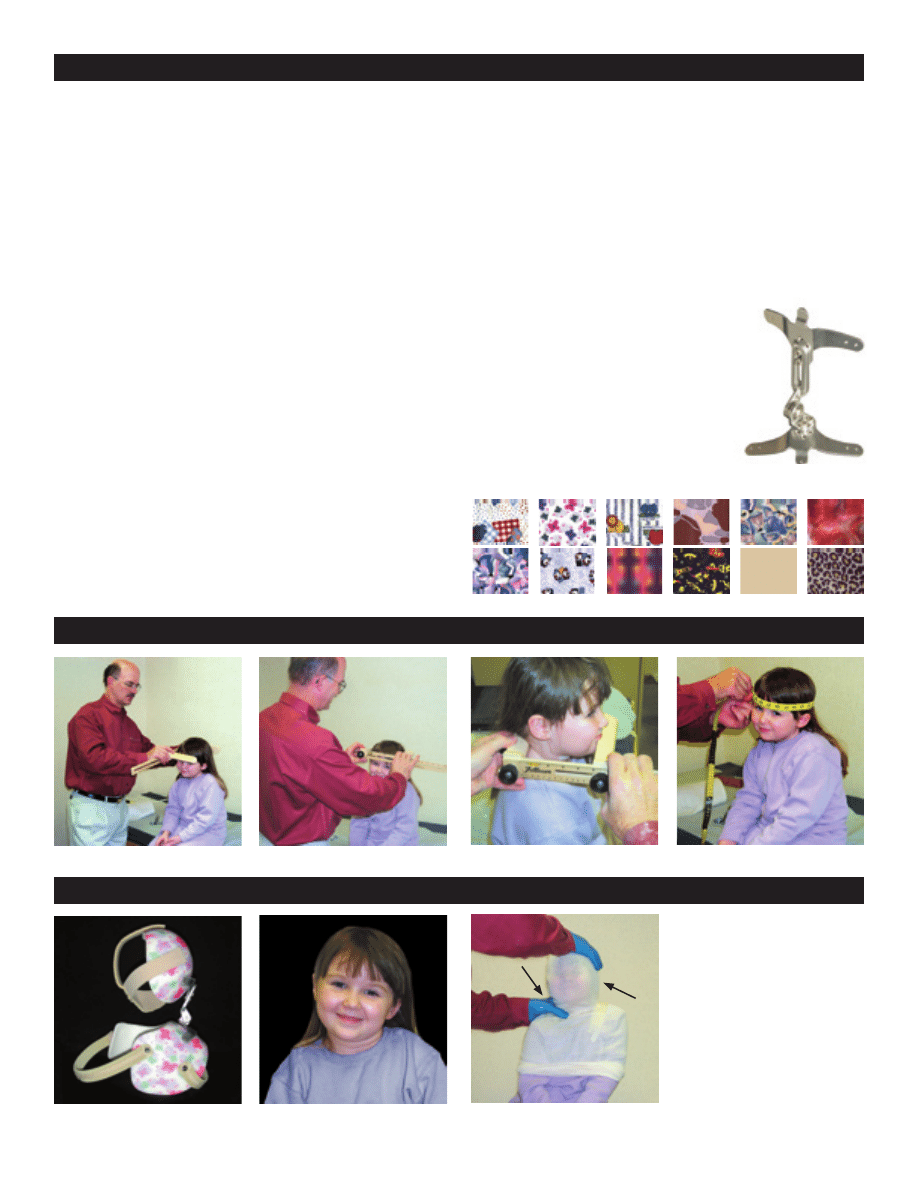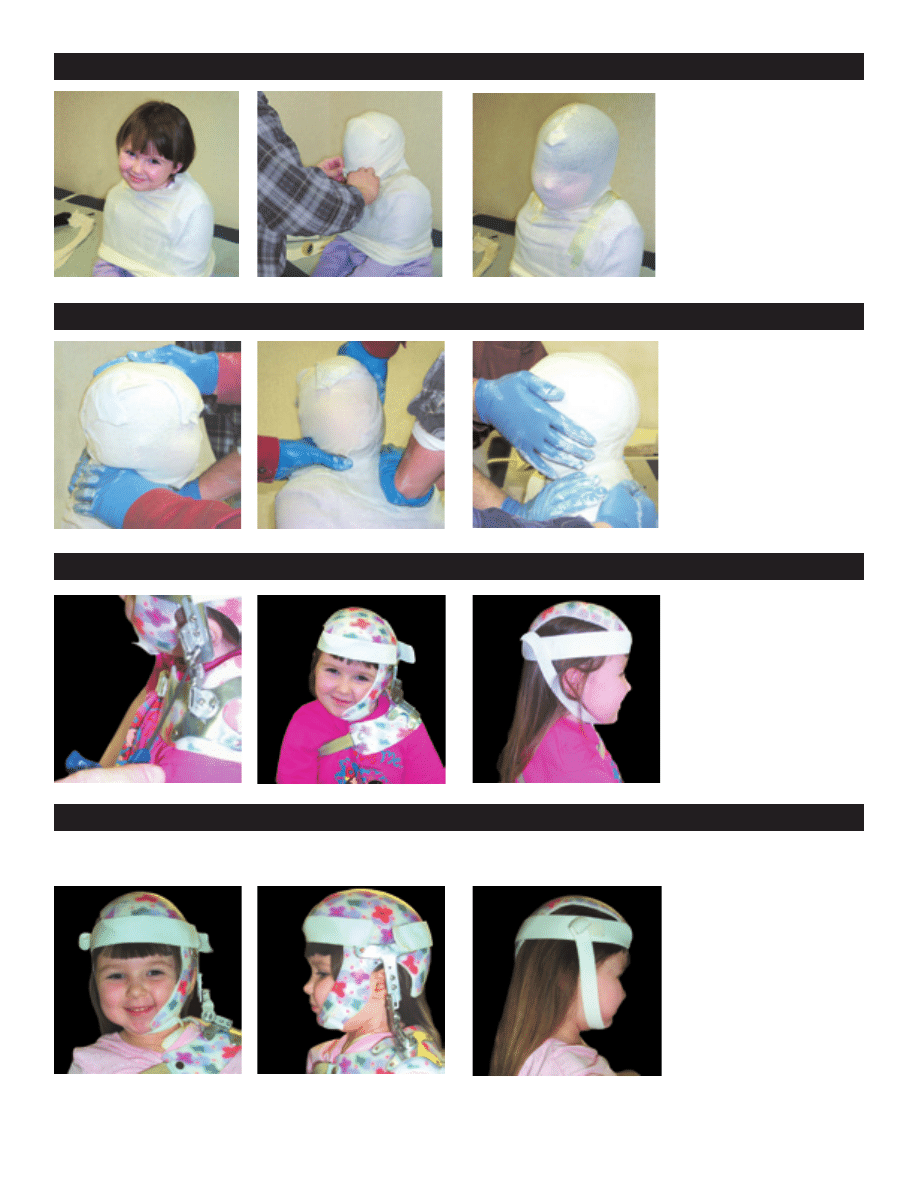
Presented By: Karl Fillauer, CPO, FAAOP; Fillauer, Inc
Robert R. Madigan, MD; Knoxville Orthopedic Clinic
What is Torticollis?
Torticollis is a condition where the head is bent to one side and
rotated in the opposite direction due to acongenital shortening of the
sternocleidomastoid muscle. This condition becomes apparent shortly
after birth and is also known as “wry neck” syndrome. The causes of
torticollis may be genetic, acquired, or idiopathic (occurring without
a known cause) and may also develop later in childhood or adulthood.
Acquired torticollis, much more difficult to treat, results from damage
to the muscular or nervous system due to trauma or disease. In
most cases surgical release of the tight sternocleidomastoid muscle
is indicated followed by aggressive physical therapy to stretch the
contracture. Often the surgeon is interested in orthotically managing
the deformity by gradually moving the head into the correct position.
The Fillauer Torticollis Orthosis has the advantage of being able to
maintain the head in any position desired with respect to cervical
flexion, abduction, and transverse rotation.
Diagnosis - Data
• Muscular torticollis is a common congenital musculoskeletal
anomaly after dislocated hip and clubfoot.
• Incidents varying from 0.4% to 1.9%
• No predilection for either sex
• 6.% to 19.% (congenital Muscular Diagnosis 3-12 months) have
incidence of hip dysplasia in direct relation to the severity of
the torticollis.
Types of Treatment
• Physical Therapy - Muscle Stretching, P. T. and Parents
• Surgery Followed with Physical Therapy and Orthosis.
Orthotic Management of Congential Muscular Torticollis
Orthotic Indications and Goals
• Easy to Fabricate
• Ease of Donning/Doffing
• Comfortable for patient
• Positional Adjustments
• Physiological Positioning
• Stability
Recommended Success Factors
• Accurate Measurement and Cast
• Ease in Donning/Doffing and a Comfortable Fit
• Multiplane Positional Adjustments
Orthotic Design
• Height Adjustment
• M-L Angulation Adjustment
• Rotational Adjustment
• A-P Placement
• Right or Left
Components
• Torticollis Joint (A Multiplane Adjustable Connector)
• Helmet/Shoulder Sections
• Elastic Velcro Straps
Materials
• Pe-Lite Interface 3mm
• Velcro Straps
• Copolymer Thermoplastic 1/8 inch - Transfer Paper to Personalize
Measurements
Temporal Head A-P
Temporal Head M-L
Base of Neck to Mandible A-P
Temporal Head Circumference
Patient Positioning
Stretch and exercise patient to
obtain proper holding position
during plaster impression.
Fillauer
®
P.O. Box 5189 • 2710 Amnicola Hwy • Chattanooga, TN 37406 • 800 251 6398 • Fax: 423 629 7936 • Web: www.fillauer.com/products/torticollis

Preparation for Plaster Impression
Apply 1st stockinette from base
of neck to include shoulders
Apply 2nd stockinette over-
lapping a minimum of 1 inch
Apply tape to secure
stockinette
Plaster Splint of Head & Neck Impression
Plaster impression of left
Torticollis
Preoperative - Fitting and Delivery
Make needed multiplane
adjustments
Confirm fit for contact
at base of neck
Utilize elastic velcro for
comfort and security
Postoperative Management
Verify head position
Confirm proper fit
(lateral view)
Evaluate and adjust elastic
strapping as needed
• Physician can easy adjust alignment and head position.
• Time of wear: three months full time, three months night wear.
• Stretching exercise performed by parents and therapist.
• Patient should be followed by Orthotist in addition to Physician during
initial three months.
References
• Binder, H., Eng, G.D. Gaiser, J.F., Koch, B. Congenital Muscular torticollis. Arch Phys Med Rehabil 68:222-225, 1987
• Wolfort, F.G., Kanter, M.A., Miller, L.B. Torticollis. Plast. Reconstr. Surg Sept. 2, pp, 682-692, 1988.
M024/03-01
Wyszukiwarka
Podobne podstrony:
więcej podobnych podstron